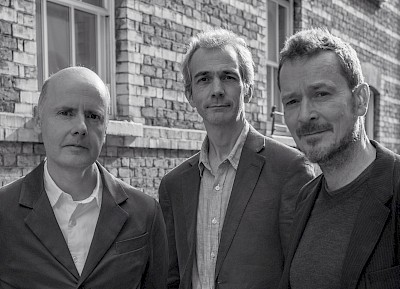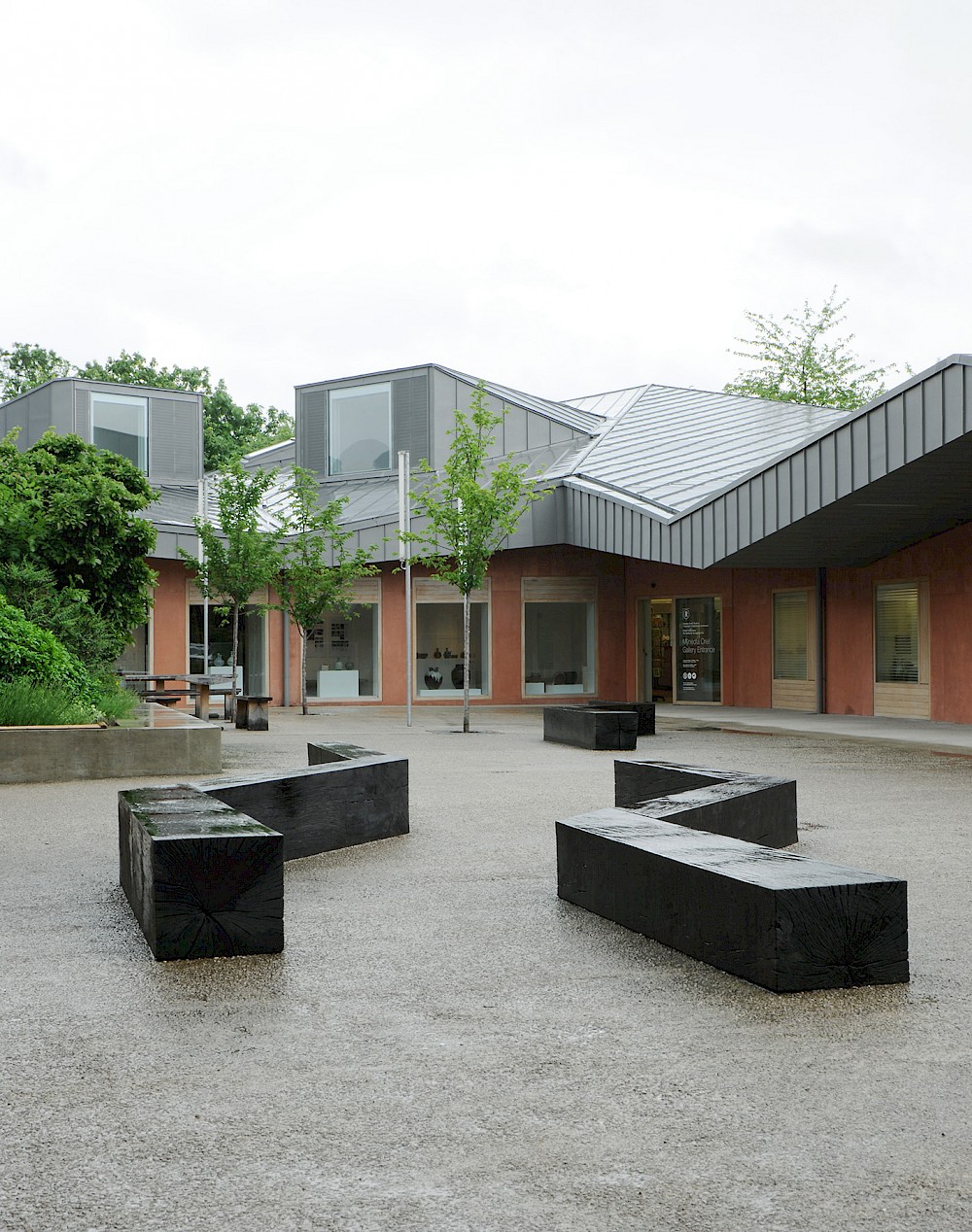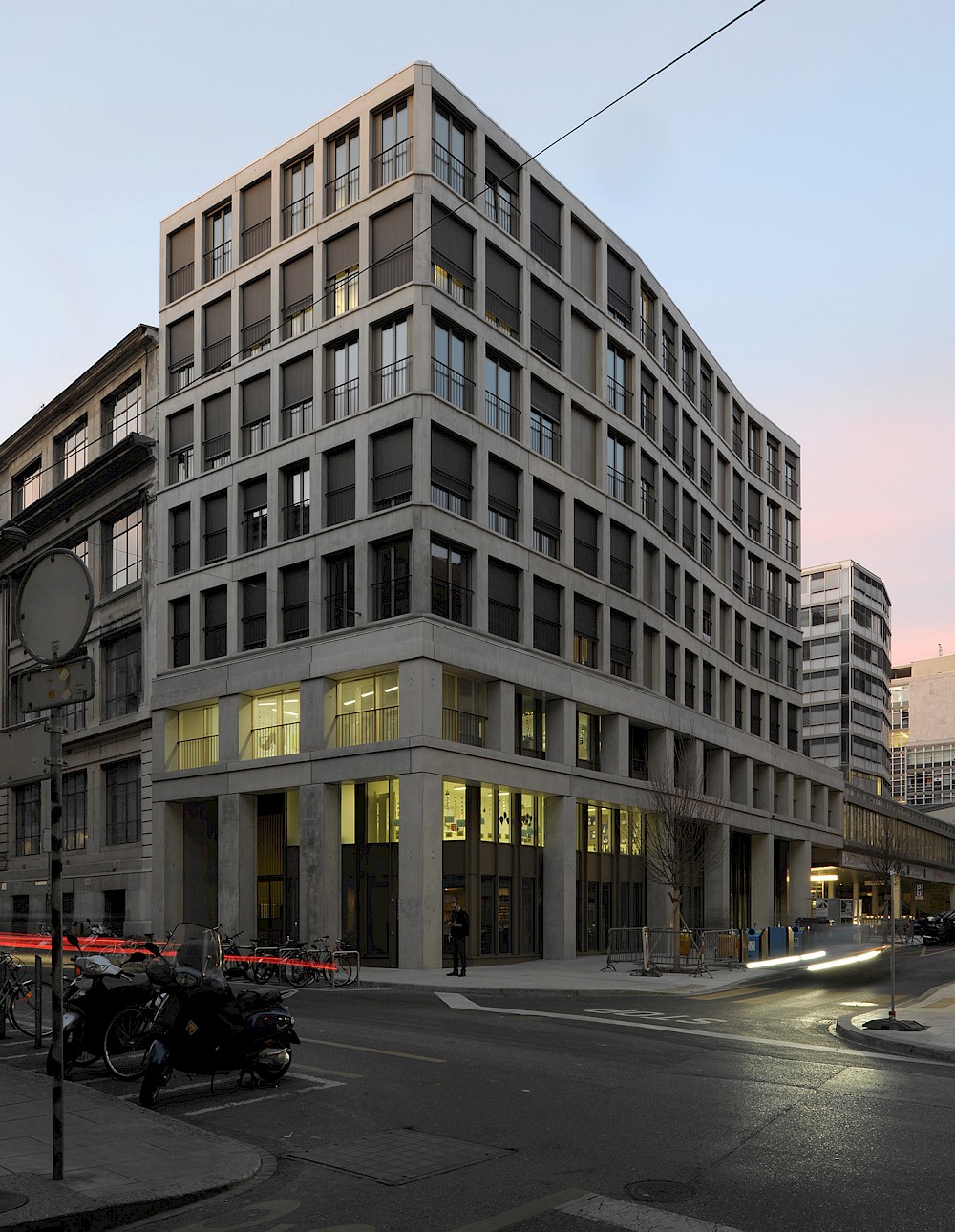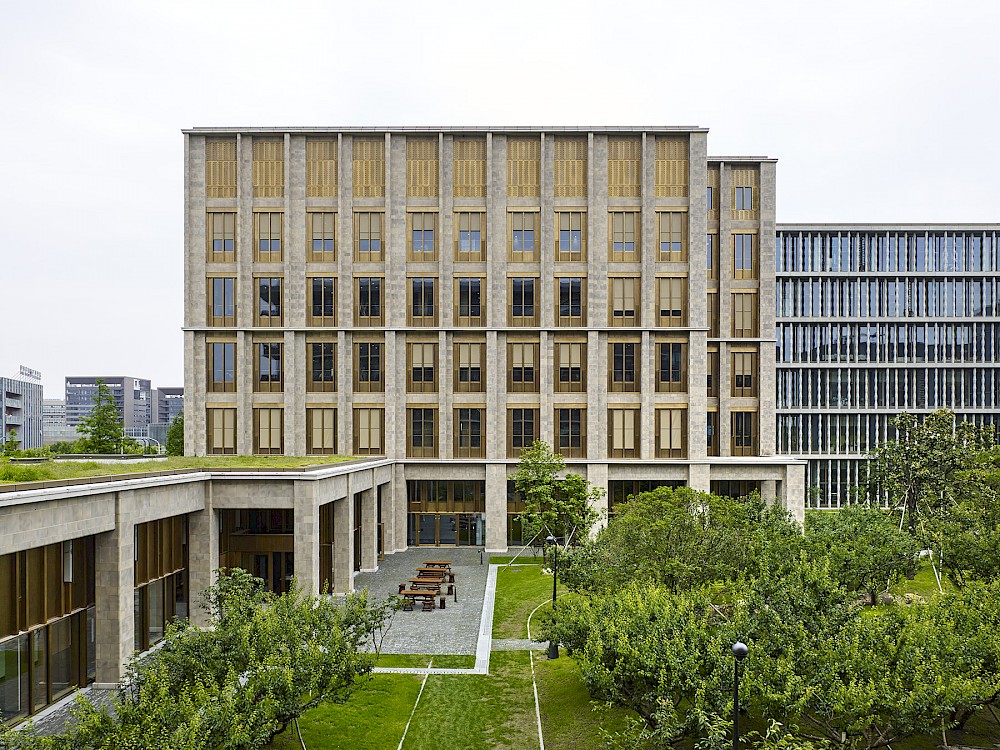BIENNIAL PROJECT
Reimagining the Tower
Our contribution to this third iteration of the 1922 Chicago Tribune Competition is a pencil tower of such slender form and great height that it resembles a column. Inspired by the column drums (segments) of ancient classical architecture, which were stacked and pegged together to form majestic structures, our pencil tower is constructed by stacking sections, one on top of the other, creating a sense of weight and solidity. The tower has eight sides and is divided into three distinct parts: the base, the middle, and the top. Each of these sections is expressed by making an angled cut into the form that lends the building a sculpted appearance and emphasizes the classical tripartite order. This combination of slenderness and solidity results in a robust beauty that evokes ancient buildings. The weight of the tower is transferred to the ground through columns that form a plinth-like base scaled to match an imaginary city block structure.
The building is imagined with a brick facade that lends it a powerful materiality and a miniature scale in counterpoint to its overall height. Horizontal bands of fine, precast concrete emphasize a secondary horizontal proportion with large structural openings between brick piers. Internally, the vertical pegs that form the interlocking structure represent the cores of an imaginary office environment of open space. The thickness of the external walls is exaggerated to contain a sequence of niches and windows with deep reveals from which the city outside can be viewed and contemplated.
BIO
Established in 1996, Sergison Bates architects have earned a reputation as one of the UK’s leading architectural practices by successfully engaging with all dimensions of architectural and urban design. The main office in London is international in outlook and staff composition, and in 2010 a second office was opened in Zürich. Both offices are currently involved in a wide range of international projects ranging from urban planning to regeneration, public buildings, housing and private houses.
Sergison Bates’ projects are informed by a sensitive approach to place, the experiential potential of materials and construction and a concern for the environmental, social and economic aspects of sustainability. They aspire to create a design-led architecture that is contemporary and rooted in its context, at all scales, and are committed to a research-based approach, supported by the partners’ academic work.
The practice has won recognition from architectural critics and numerous national and international awards – among them the Erich Schelling Prize and Heinrich Tessenow Gold Medal.






